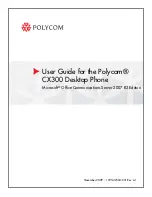
23
®
G
G
G
G
G
STATUS LEDS
The BGSM-I
Interface has 4 status LEDs.
,
,
,
,
,
All 4 LEDs will blink during the Initializing and Programming phases.
The following section describes the Control panel status LEDs.
y
GREEN — If this LED is OFF and the RED LED is ON, the GSM Network service is unavailable (NO SERVICE).
This LED will Blink when the GSM Network reception is bad, if this occurs, only SMS transmissions will be possible.
If this LED is ON (glowing), the
BGSM-I
Interface will be able to manage all telephone communications.
Y
GREEN — When this LED is ON (glowing), the reception is good. This LED will switch ON only when the other GREEN
LED is ON (glowing).
t
AMBER — This LED will switch ON (glowing) when the interface switches to the GSM Network (due to land line trouble).
This LED will Blink in the event of an incoming or outgoing call (regardless of the operating status of the land line).
G
RED — This LED is Normally OFF, it will blink in the event of power trouble. This LED will switch ON (glowing) in the
event of GSM Module [17] trouble, or when the GSM Network is unavailable (NO SERVICE), or when Remote
Programming option is enabled. If this LED switches ON (glowing), and the two Green LEDs indicate the availability of
the GSM Network service, ONLY Emergency calls will be possible.
OPERATING PRINCIPLES
Simulated Land Line
The Simulated land line provides traditional telephone devices with a backup line in the event of land line trouble (line down).
This operating mode will allow calls and data transmissions to be carried on the land line. If the voltage on the land line
terminals (LE) drops below 3 V for a period of between 10 to 45 seconds (depending on the device connected to the LI
terminals), the BGSM-I will switch the connected telephone device to the GSM Network for a full 15 minute interval, at the
end of this interval, it will check the land line:
— if the land line has been restored, it will switch the connected telehone device back to the land line;
— if the land line is still down, it will continue to simulate the land line until the it is fully restored.
The BGSM-I will not switch during ongoing calls. The simulated line will provide the line ring voltage for incoming calls and
will decode DTMF dialling (the BGSM-I is unable to decode Pulse dialling).
The Function Priority (to be selected during the programming phase) will determine how the BGSM-I manages
communications (SMS and ContactID) and calls from the telephone device connected to the LI terminals (e.g. Control panel).
SMS function
This operating mode allows the BGSM-I to send text messages to 8 telephone numbers. The messages can be associated
with the following events:
Alarm signals on the 4 Programmable Input lines: 2 preset messages — Alarm and End of Alarm.
Land Line Test: 2 preset messages — Line down and Line restored.
Power supply Test: 2 preset messages — Trouble and Trouble clear
Periodic message: 1 message to be sent at regular intervals (accepted values 1 through 999999 minutes).
,
,
,
,
,
The SMS messages will be sent to the programmed numbers when the respective events occur.
ContactID Mode
This operating mode will allow the BGSM-I to send calls to the Central Station:
Alarm signals on the 4 Programmable Input lines: require Event Codes and Customer Codes
Status signal, with a Customer Code
Land Line Test:
Power supply Test:
Call queue full
Periodic report (to be sent at regular intervals — accepted values 1 through 999999 minutes).
,
,
,
,
,
The Contact ID reports will be sent when the respective events occur.
















































